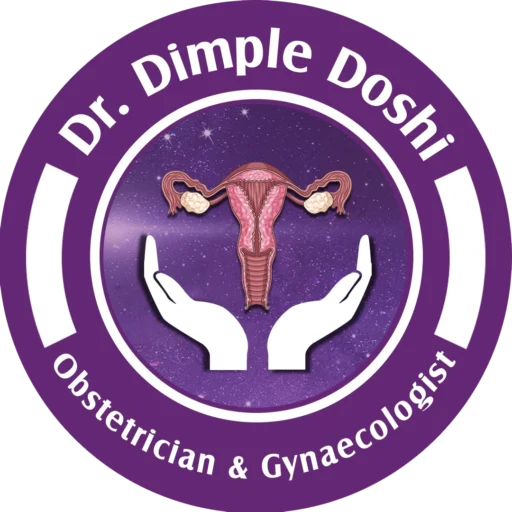Introduction
Laparoscopy is a diagnostic procedure, and is often used to solve medical dilemmas during treatments for conditions like infertility, chronic pelvic pain, or painful menstruation. Beyond diagnostics, laparoscopy also enables precise treatment once the underlying cause of a condition is identified.In gynecology, many conditions remain undiagnosed through routine tests, leaving doctors uncertain about the next steps in treatment. Laparoscopy allows for direct visualization of internal organs, bridging this gap effectively.
The Role of Laparoscopy in Gynecology
Laparoscopy is invaluable in gynecological treatments, such as:
- Fibroid and Cyst Removal: Extracting fibroids and cysts with precision.
- Adhesiolysis: Breaking adhesions that may cause pain or infertility.
- Endometriosis Treatment: Fulgurating endometrial spots.
- Addressing Painful Spots: Identifying and treating areas of internal pain.
- Finding reasons for infertility and testing fallopian tubes patency.
History of Laparoscopy
The first human laparoscopy was performed by Hans Christian Jacobaeus of Sweden in 1910. The term “laparoscopy” is derived from Greek: “laparo” (abdominal wall) and “scopy” (to see). Using a specialized telescope, surgeons can view internal organs via a monitor, enabling minimally invasive surgery.
Advantages of Laparoscopy
Laparoscopy offers numerous benefits over traditional open surgeries:
- Small Incisions: Leading to better cosmetic outcomes.
- Less Pain: Reduced post-operative discomfort.
- Faster Recovery: Patients recover more quickly.
- Early Discharge: Many can resume normal activities shortly after the procedure.
Given these advantages, laparoscopy is often preferred over larger incisions whenever feasible.
Diagnostic Uses of Laparoscopy
Laparoscopy is employed to diagnose various conditions, including:
- Infertility: to diagnose the causes and assessing fallopian tube patency
- Chronic Pelvic Pain: Determining underlying causes.
- Dysmenorrhea (Painful Periods): Confirming endometriosis or other conditions.
- Adhesions: Identifying adhesions that may cause pain.
- Fallopian Tube Patency: Assessing whether fallopian tubes are open.
- Pelvic Inflammatory Disease (PID) and Tuberculosis: Diagnosing infections and inflammation. And to assess treatment response for diseases like tuberculosis
- Treatment Assessment: Evaluating responses to treatments like anti-tuberculosis therapy.
- Biopsies: Collecting tissue samples to diagnose conditions like cancer or tuberculosis.
- Congenital Malformations: Diagnosing structural anomalies of the reproductive tract.
- Ectopic Pregnancy: Confirming pregnancy outside the uterus.
- Pelvic Congestion: Diagnosing this potential cause of chronic pain.
Key Conditions Diagnosed with Laparoscopy
- Endometriosis: Laparoscopy is the only method for early and accurate diagnosis.
- Adhesions: Often undetectable through other tests but visible via laparoscopy.
- Tuberculosis: Biopsy and visual inspection help confirm genital or abdominal tuberculosis.
- Cancer: Staging and diagnosing cancer with precision.
Laparoscopy is particularly valuable in infertility investigations, helping clinicians better understand and address women’s health issues.
How Laparoscopy is Performed
Laparoscopy is a minimally invasive procedure performed under anesthesia. The steps include:
- Incision: A small incision near the belly button is made.
- Gas Inflation: The abdomen is inflated with CO2 gas for better visibility; and to safeguard the organs as due to gas insufflation; the vital organs are away from the area of electrosurgery.
- Insertion: A laparoscope (a long, thin telescope with an internal lens) is inserted. This laparoscope is connected to an HD monitor through an HD camera. So the surgeon can see the magnified image of your organs for better precision .
- Inspection: Additional small incisions may be made for further examination or treatment, depending on the findings.
Recovery After Diagnostic Laparoscopy
Most patients can sip water 4-6 hours post-procedure, followed by a light diet. Once anesthesia wears off and walking is possible without support, patients are discharged.
Pain Management and Recovery
Modern anesthesia and pain relief methods ensure minimal discomfort. Many patients can comfortably return to work the next day.
Conclusion
Laparoscopy is gold standard in diagnosing and treating gynecological conditions. Its minimally invasive nature, combined with precise diagnostic as well as therapeutic capabilities, it becomes a preferred choice for patients and doctors alike. Whether investigating infertility, pelvic pain, or endometriosis, laparoscopy provides answers and paves the way for effective treatment.

